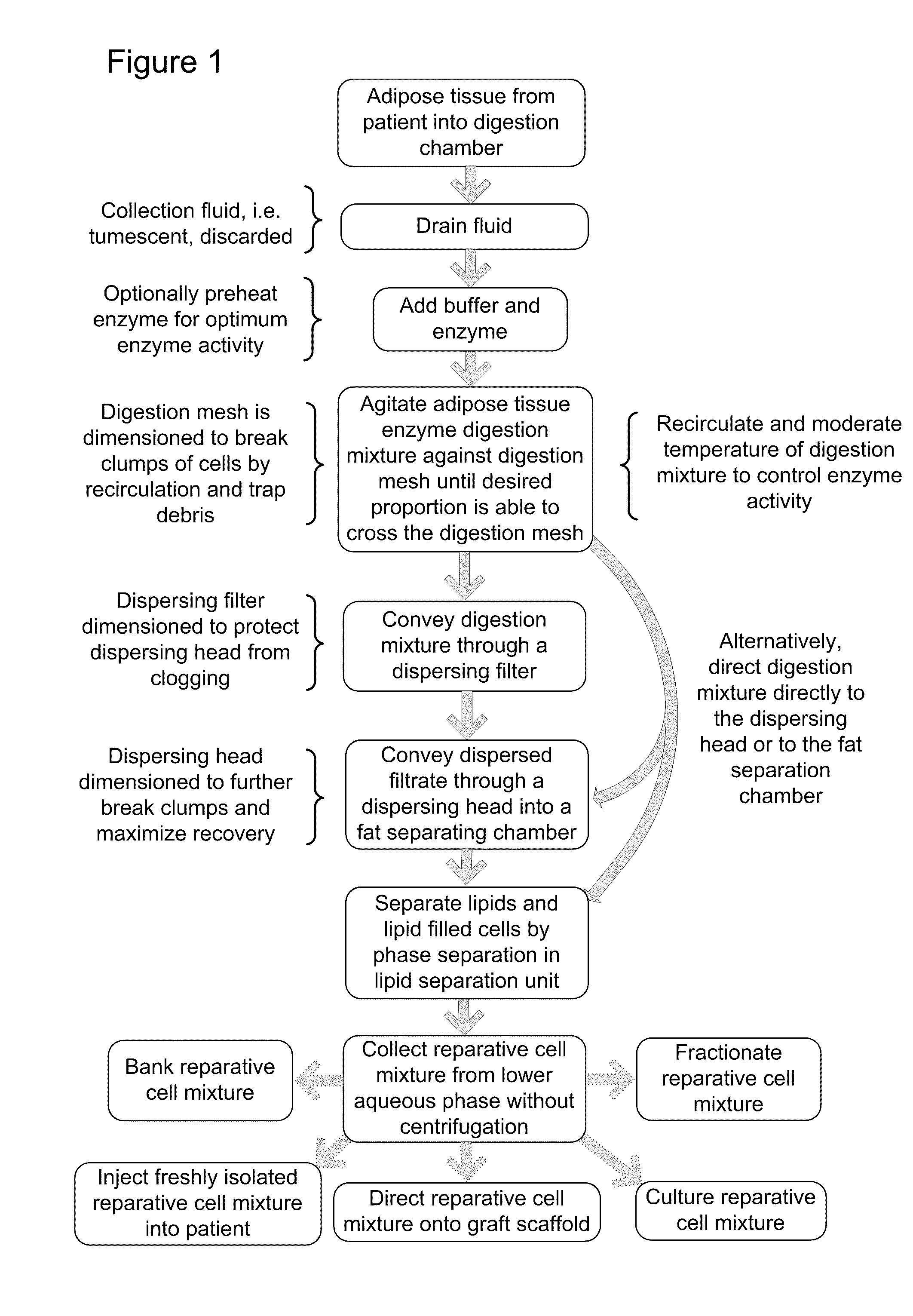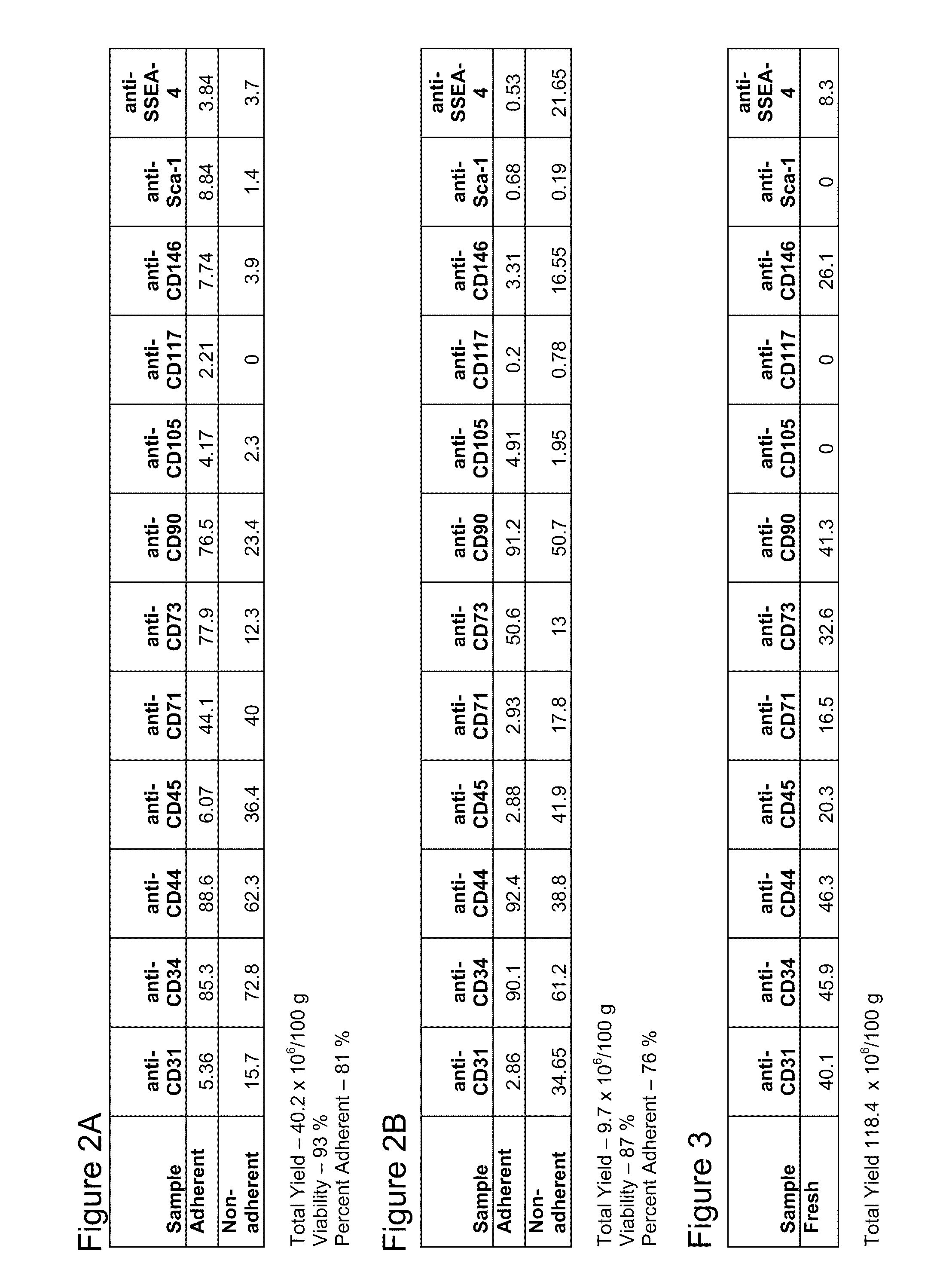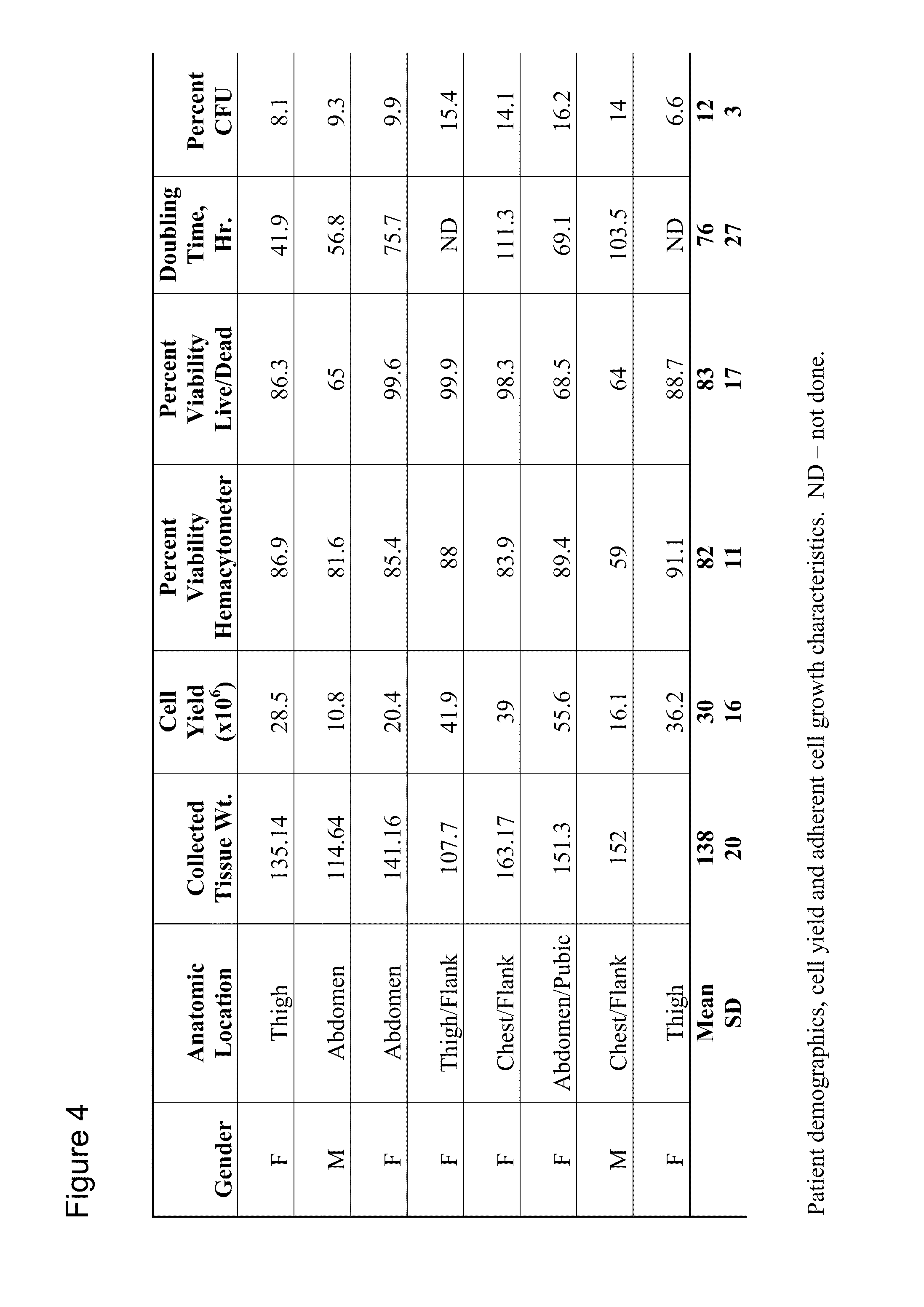Biomatrix composition and methods of biomatrix seeding
a biomatrix and composition technology, applied in the field of tissue scaffolds, can solve the problems of limiting the utility of this allogenic cell product, requiring a prolonged treatment program including several surgical interventions, and unmet need for implantable, and achieve the effect of accelerating healing and remodeling
- Summary
- Abstract
- Description
- Claims
- Application Information
AI Technical Summary
Benefits of technology
Problems solved by technology
Method used
Image
Examples
example 1
Reparative Cell Collection Apparatus
[0075]FIG. 6 is a schematic depiction of one embodiment of a unitary apparatus for isolation of stromal vascular cells, wherein the cells are collected without centrifugation. Apparatus 100 includes a digestion chamber 105 and a fat separation chamber (a.k.a. lipid separation unit) 140. Digestion chamber 105 generally refers to a housing that can receive and treat a biological sample and can have various shapes and structures. The depicted digestion chamber 105 includes at least two compartments, predigestion chamber 102 and post digestion chamber 103, separated by digestion mesh 101. The digestion chamber may optionally include a vent 116 that may include a filter 118 to preserve sterility such as, for example, an ACRODISC brand syringe filter (Pall Scientific). In the depicted embodiment, the digestion chamber 105 is cylindrical and the pre and post digestion chambers are formed by placement of an inner mesh cylinder 101 disposed within the dige...
example 2
[0088]In one example, a reparative cell population was isolated as follows. Lipoaspirate was collected under informed consent in the operating room directly into a unitary purification apparatus by standard suction assisted lipoplasty with tumescent. The apparatus including tumescent fill was transported to the laboratory and processed within 2 hours of collection. In practice however, it is anticipated that the purification apparatus will be suitable for, and will be used, in the operating suite. The digestion chamber of the apparatus as depicted in Example 1 included a predigestion chamber and an inner postdigestion chamber separated by a nylon mesh having a pore size of approximately 1 mm. The tumescent was drained and a volume of approximately 100 ml of drained lipoaspirate was washed by draining the predigestion chamber and refilling with a solution of lactated Ringer's solution, which was prewarmed to 37° C. containing a proteolytic enzyme combination comprised of collagenase ...
example 3
[0089]After processing tissue in the device, cell viability and cell number were determined. In one processing run, the collected cells were plated at a density of approximately 7×105 cells / cm2 into a T185 flask in MEM, 20% (v / v) FBS including and antibiotic / antimycotic and cultured overnight at 37° C. in a humidified 95% O2, 5% CO2 atmosphere. After overnight, non-adherent cells were harvested by aspiration, and adherent cells were harvested by trypsinization. Immediately after harvest, cells were processed for flow cytometry. Numbers represent the net percentage positive cells after subtraction of background (2′ Ab only) and gating to remove debris. FIGS. 2A and B represent data from two processing runs.
[0090]Cells collected as described in Example 2 have also been characterized by direct analysis without separation into adherent and non-adherent populations. The results are depicted in FIG. 3.
[0091]In comparing the cells isolated as disclosed herein with mesenchymal stromal cells...
PUM
| Property | Measurement | Unit |
|---|---|---|
| incubation time | aaaaa | aaaaa |
| time | aaaaa | aaaaa |
| diameter | aaaaa | aaaaa |
Abstract
Description
Claims
Application Information
 Login to View More
Login to View More - R&D
- Intellectual Property
- Life Sciences
- Materials
- Tech Scout
- Unparalleled Data Quality
- Higher Quality Content
- 60% Fewer Hallucinations
Browse by: Latest US Patents, China's latest patents, Technical Efficacy Thesaurus, Application Domain, Technology Topic, Popular Technical Reports.
© 2025 PatSnap. All rights reserved.Legal|Privacy policy|Modern Slavery Act Transparency Statement|Sitemap|About US| Contact US: help@patsnap.com



